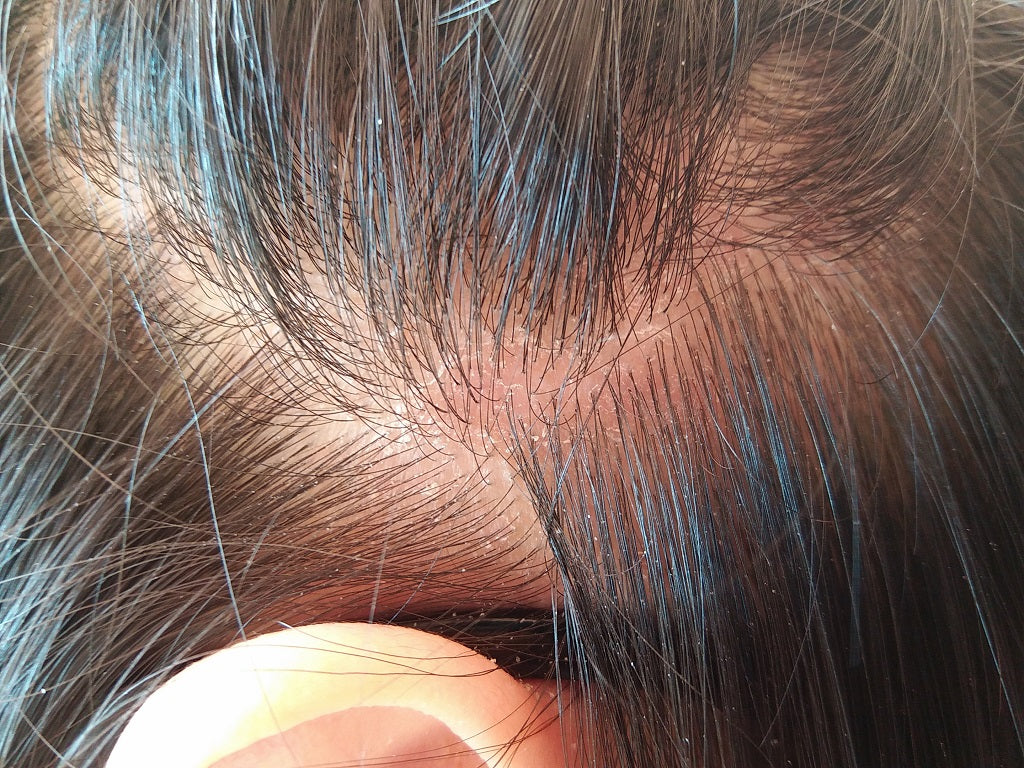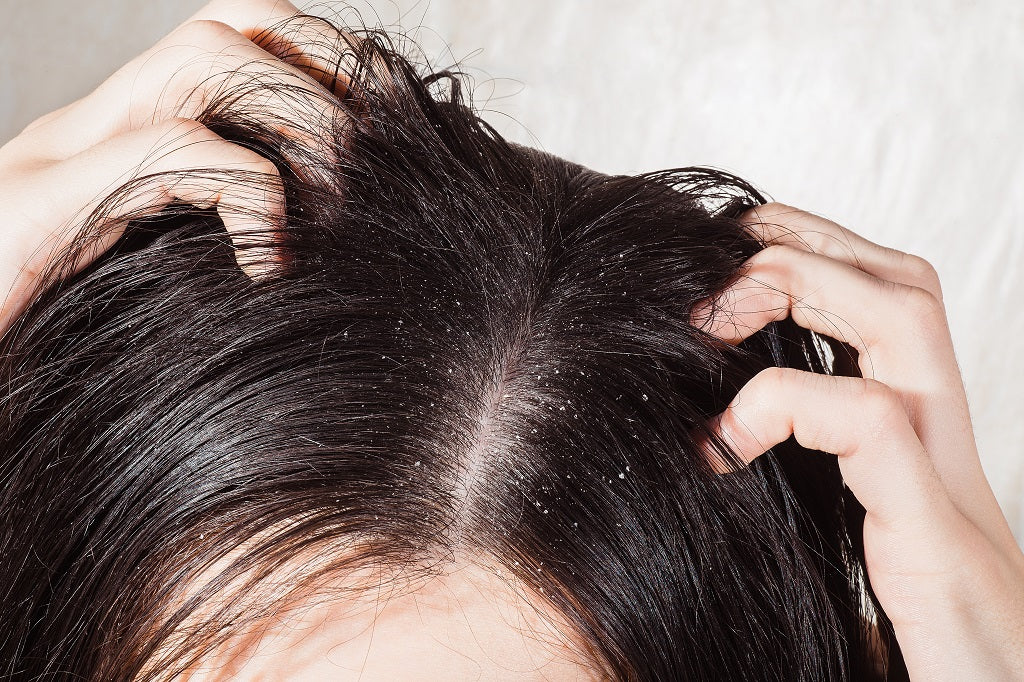Most of the skin diseases are attributed to the increased level of microbes in the environment we live in. The added vulnerability is the low immunity to infections in the modern lifestyle. Skin infections like Ringworm, clinically known as Tinea Capitis is well known for its quick outbreak due to contact through object or people.
What Is Ringworm Of The Scalp?
Tinea capitis, a fungal infection of the scalp is commonly referred to as Ringworm of the scalp. It majorly affects the scalp and the hair shafts. The major symptoms and the significant signs of the infection vary from person to person but is noted by the scaly and bald patches on the head. And often is accompanied by severe itching. As it is highly contagious, it quickly spreads through contact from a person or an object. This owes to a high frequency of the infection among school children and toddlers due to less immunity and higher chances of contact with peers.
Also Read : Ringworm - Causes, Symptoms, Home Remedies and Prevention
What Causes Ringworm Of The Scalp?
Ringworm, unlike the name suggests, is not an infection caused by any worm. Its name comes from the ring structure or the circular shape of the infection on the skin. It is caused by mould-like fungi, Dermatophytes, that attacks the outer layer of the skin focusing on the scalp and the hair shaft. In most cases, Ringworm of the scalp is denoted by the severe inflammation that results in the scarring of the scalp and permanent hair loss at the site of infection.
The major known methods of transmission of the Ringworm infection are:
1. Humans
Direct contact concerning touch or the skin contact is a sure mode of spread of the infection.
2. Object
The objects that the infected person has touched or used can be a potential mode of transmission of the infection.
3. Animals
Domestic animals, such as the dogs, cats, cows, pigs, goats and horses and their babies are potential sources of the spread of the infection.
Scalp Ringworm Signs And Symptoms

- Redness of the scalp with scaly patches of skin
- Intense itching sensation
- Heavy hair fall
- Fever
- Tenderness of the scalp
- Patches with black dots that indicate the hair fall
- If the infection is not treated, it leads to the formation of pus, which is referred to as Kerion.
- Crusting of the Pus
- Sometimes, the severe conditions are marked by the favus, which is a honeycomb-like structure of yellow crusts.
Ringworm On Scalp Treatment At Home
1. Tea Tree oil
The Anti-fungal property of tea tree oil cures the infection by fighting against the fungi that are responsible for the damage. It reduces the redness and the inflammation and also nourishes the skin reducing the scaly patch.
Also Read : Top 11 Benefits of Tea Tree Oil With its Usage
How To Use
Mix about 3 to 4 drops of Anveya's Tea Tree Oil into your regular hair oil and apply it on the infected area. Repeat this twice daily.
ANVEYA AUSTRALIAN TEA TREE OIL, 100% PURE, 15ML
- Works on ACNE, SCARS & PIGMENTATION due to its antibacterial and anti-inflammatory properties
- Application in treating SKIN, NAIL & TOE INFECTIONS
- Great for HAIR. Fights against DANDRUFF with its antifungal properties
- Diffuse for fresh & CLEAN HOME
2. Apple Cider Vinegar

The acidic properties of the apple cider vinegar help to eliminate the fungal growth and forces the infection to come to an end. It significantly reduces the itching.
How To Use
Mix about 1 teaspoon of apple cider vinegar with 2 tbsp. of water and apply it over the infected area. Use this multiple times a day.
3. Garlic
The antifungal components, ajoene and allicin, are highly responsible for making garlic the wonder solution to all microbial infections.
How To Use
Crush a few cloves of fresh garlic and mix it in the coconut oil. Keep it out in the sun for several days and use the garlic infused oil to apply on the infected area.
4. Turmeric

The major benefits of turmeric are that it heals the skin and reduce the infection immediately. The fungal infection is completely healed with the regular use of turmeric, and the corresponding scars are prevented.
How To Use
Make a paste of turmeric with olive oil and apply it as a patch over the infected area. Leave it for 2 hours and wash with medicated shampoo. Do this regularly.
5. Aloe Vera
Since the tinea capitis is associated with skin and hair damage with a fungal infection, aloe vera sorts the issue by killing the fungi with its antifungal properties and healing the skin and hair by its nourishing them.
Also Read : Benefits of Aloe Vera for Skin, Hair and Health
How To Use
Take the paste of aloe vera from a fresh leaf and apply it over the scalp at the sites of infection. Use this method on a daily basis for speedy recovery.
6. Indian Lilac

Neem is also known as Indian Lilac, which is highly packed with antimicrobial properties. It efficiently fights against all microbial growth, killing the fungi and healing the skin. It is essentially used to prevent the spread of infection and to clear out the infection out of the scalp.
How To Use
Grind a handful of neem leaves and make a paste. Apply it over the scalp and let it sit for an hour. Wash with a medicated shampoo. Repeat it once a day for improved conditions.
7. Papaya
Papain and chymopapain are the major constituents of Papaya which significantly contribute to the reduction of inflammation and eliminate the survival modes of all fungi.
How To Use
Cut unripe papaya into pieces and rub it over the infected area. Repeat it several times a day to reduce the itching and inflammation.
Precautions To Take
- Since the tinea capitis is highly contagious, it is easier to spread among the family members. It is suggested that the complete family follows the recommended care to reduce the vulnerability of infection and to improve immunity.
- All the hair brushes and combs should be cleaned and dried using a disinfectant.
- Eating foods rich in probiotics will increase the immunity against the fungal infections.
- Refrain from scratching the scalp at the infected area, as it spreads the infection.
How To Prevent Tinea Capitis?
Prevention is the best when compared to any cure. Staying away from the infected person, and to avoid sharing of hair care products, combs, hair accessories and hats are a few methods of precautions to prevent the tinea capitis treatment.
When To Consult A Doctor?
Once you find scaly patches on the skin with increased itching, it is better to consult the doctor immediately. The earlier the diagnosis, the better the efficiency of the treatment and the full regrowth of the lost hair.
Follow-up After Treatment Of Ringworm On The Hair
Since the regrowth of hair and the healthy maintenance of the scalp is quite tedious after the treatment and cure, it is essential to follow up with the medications, and regular appointments with the doctor are necessary.
Frequently Asked Questions
1. Is Ringworm On The Scalp Contagious?
Yes, Ringworm on the Scalp is highly contagious, making the prevention methods less effective. It can easily spread through the fungal spores by contact with the infected person, infected hair, skin cells and contaminated objects.
2. For How Long Is Ringworm On The Hair Contagious?
The Ringworm on the hair is contagious and highly active for the spread of disease from being affected till the first 48 hours after the beginning of the treatment process.
3. What Is The Incubation Period For Ringworm Of The Scalp?
The significant signs and symptoms of the Ringworm develop within a week or a maximum of 14 days after contact with the infection/infected person. People with good immunity do not get infected with ringworm infection as easily as the rest.
Disclaimer: All the content on anveya.com/blogs is solely for information. It is not intended to be a substitute for professional medical advice, diagnosis or treatment. Always seek the advice of your physician or a qualified health care provider. The information, suggestion or remedies mentioned on this site are provided without warranty of any kind, whether express or implied.




